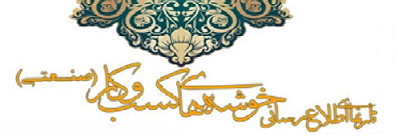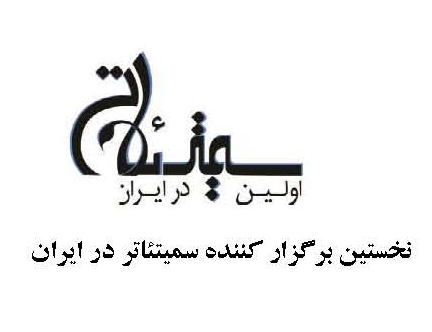آتش گرفتن زندگي توماس اديسون
اديسون در سنين پيري پس از كشف لامپ، يكي از ...
اديسون در سنين پيري پس از
كشف لامپ، يكي از ثروتمندان آمريكا به شمار مي رفت و درآمد سرشارش را تمام و
كمال در آزمايشگاه مجهزش كه ساختمان بزرگي بود هزينه مي كرد. اين
آزمايشگاه، بزرگترين عشق پيرمرد بود. هر روز اختراعي جديد در آن شكل مي
گرفت تا آماده بهينه سازي و ورود به بازار شود. در همين روزها بود كه نيمه
هاي شب از اداره آتش نشاني
به پسر اديسون اطلاع دادند كه
آزمايشگاه پدرش در آتش مي سوزد و حقيقتاً كاري از دست كسي بر نمي آيد و
تمام تلاش ماموران فقط براي جلوگيري از گسترش آتش به ساير ساختمانها است.
آنها تقاضا داشتند كه موضوع به شكل مناسبي به اطلاع پيرمرد رسانده شود.
پسر با خود انديشيد كه احتمالاً پيرمرد با شنيدن اين خبر سكته مي كند و لذا از بيدار كردن او منصرف شد و خودش را به محل حادثه رساند و با كمال تعجب ديد كه پيرمرد در مقابل ساختمان آزمايشگاه روي يك صندلي نشسته است و سوختن حاصل تمام عمرش را نظاره مي كند. پسر تصميم گرفت جلو نرود و پدر را آزار ندهد. او مي انديشيد كه پدر در بدترين شرايط عمرش بسر مي برد.
ناگهان پدر سرش را برگرداند و پسر را ديد و با صداي بلند و سر شار از شادي گفت: «پسر تو اينجايي؟ مي بيني چقدر زيباست! رنگ آميزي شعله ها را مي بيني! حيرت آور است! من فكر مي كنم كه آن شعله هاي بنفش به علت سوختن گوگرد در كنار فسفر به وجود آمده است. واي! خداي من، خيلي زيباست! كاش مادرت هم اينجا بود و اين منظره زيبا را مي ديد. كمتر كسي در طول عمرش امكان ديدن چنين منظره زيبايي را خواهد داشت. نظر تو چيست پسرم؟»
پسر حيران و گيج جواب داد: «پدر تمام زندگيت در آتش مي سوزد و تو از زيبايي رنگ شعله ها صحبت مي كني؟ چطور ميتواني؟ من تمام بدنم مي لرزد و تو خونسرد نشسته اي!»
پدر گفت: «پسرم از دست من و تو كه كاري بر نمي آيد. مأمورين هم كه تمام تلاششان را مي كنند. در اين لحظه بهترين كار لذت بردن از منظره ايست كه ديگر تكرار نخواهد شد. در مورد آزمايشگاه و باز سازي يا نو سازي آن فردا فكر مي كنيم. الآن موقع اين كار نيست. به شعله هاي زيبا نگاه كن كه ديگر چنين امكاني را نخواهي داشت.»
توماس آلوا اديسون سال بعد مجدداً در آزمايشگاه جديدش مشغول كار بود و همان سال يكي از بزرگترين اختراعات بشريت يعني ضبط صدا را تقديم جهانيان نمود. آري او گرامافون را درست يك سال پس از آن واقعه اختراع كرد.
پسر با خود انديشيد كه احتمالاً پيرمرد با شنيدن اين خبر سكته مي كند و لذا از بيدار كردن او منصرف شد و خودش را به محل حادثه رساند و با كمال تعجب ديد كه پيرمرد در مقابل ساختمان آزمايشگاه روي يك صندلي نشسته است و سوختن حاصل تمام عمرش را نظاره مي كند. پسر تصميم گرفت جلو نرود و پدر را آزار ندهد. او مي انديشيد كه پدر در بدترين شرايط عمرش بسر مي برد.
ناگهان پدر سرش را برگرداند و پسر را ديد و با صداي بلند و سر شار از شادي گفت: «پسر تو اينجايي؟ مي بيني چقدر زيباست! رنگ آميزي شعله ها را مي بيني! حيرت آور است! من فكر مي كنم كه آن شعله هاي بنفش به علت سوختن گوگرد در كنار فسفر به وجود آمده است. واي! خداي من، خيلي زيباست! كاش مادرت هم اينجا بود و اين منظره زيبا را مي ديد. كمتر كسي در طول عمرش امكان ديدن چنين منظره زيبايي را خواهد داشت. نظر تو چيست پسرم؟»
پسر حيران و گيج جواب داد: «پدر تمام زندگيت در آتش مي سوزد و تو از زيبايي رنگ شعله ها صحبت مي كني؟ چطور ميتواني؟ من تمام بدنم مي لرزد و تو خونسرد نشسته اي!»
پدر گفت: «پسرم از دست من و تو كه كاري بر نمي آيد. مأمورين هم كه تمام تلاششان را مي كنند. در اين لحظه بهترين كار لذت بردن از منظره ايست كه ديگر تكرار نخواهد شد. در مورد آزمايشگاه و باز سازي يا نو سازي آن فردا فكر مي كنيم. الآن موقع اين كار نيست. به شعله هاي زيبا نگاه كن كه ديگر چنين امكاني را نخواهي داشت.»
توماس آلوا اديسون سال بعد مجدداً در آزمايشگاه جديدش مشغول كار بود و همان سال يكي از بزرگترين اختراعات بشريت يعني ضبط صدا را تقديم جهانيان نمود. آري او گرامافون را درست يك سال پس از آن واقعه اختراع كرد.
Biography of Thomas Edison
Early Life
By Mary Bellis
Early Life
By Mary Bellis
Thomas Alva Edison was born on February 11, 1847 in Milan, Ohio; the seventh and last child of Samuel and Nancy Edison. When Edison was seven his family moved to Port Huron, Michigan. Edison lived here until he struck out on his own at the age of sixteen. Edison had very little formal education as a child, attending school only for a few months. He was taught reading, writing, and arithmetic by his mother, but was always a very curious child and taught himself much by reading on his own. This belief in self-improvement remained throughout his life.
Edison began working at an early age, as most boys did at the time. At thirteen he took a job as a newsboy, selling newspapers and candy on the local railroad that ran through Port Huron to Detroit. He seems to have spent much of his free time reading scientific, and technical books, and also had the opportunity at this time to learn how to operate a telegraph. By the time he was sixteen, Edison was proficient enough to work as a telegrapher full time.
First Patent
The development of the telegraph was the first step in the communication revolution, and the telegraph industry expanded rapidly in the second half of the 19th century. This rapid growth gave Edison and others like him a chance to travel, see the country, and gain experience. Edison worked in a number of cities throughout the United States before arriving in Boston in 1868. Here Edison began to change his profession from telegrapher to inventor. He received his first patent on an electric vote recorder, a device intended for use by elected bodies such as Congress to speed the voting process. This invention was a commercial failure. Edison resolved that in the future he would only invent things that he was certain the public would want.
Marriage to Mary Stilwell
Edison moved to New York City in 1869. He continued to work on inventions related to the telegraph, and developed his first successful invention, an improved stock ticker called the "Universal Stock Printer". For this and some related inventions Edison was paid $40,000. This gave Edison the money he needed to set up his first small laboratory and manufacturing facility in Newark, New Jersey in 1871. During the next five years, Edison worked in Newark inventing and manufacturing devices that greatly improved the speed and efficiency of the telegraph. He also found to time to get married to Mary Stilwell and start a family.
Move to Menlo Park
In 1876 Edison sold all his Newark manufacturing concerns and moved his family and staff of assistants to the small village of Menlo Park, twenty-five miles southwest of New York City. Edison established a new facility containing all the equipment necessary to work on any invention. This research and development laboratory was the first of its kind anywhere; the model for later, modern facilities such as Bell Laboratories, this is sometimes considered to be Edison's greatest invention. Here Edison began to change the world.
The first great invention developed by Edison in Menlo Park was the tin foil phonograph. The first machine that could record and reproduce sound created a sensation and brought Edison international fame. Edison toured the country with the tin foil phonograph, and was invited to the White House to demonstrate it to President Rutherford B. Hayes in April 1878.
Edison next undertook his greatest challenge, the development of a practical incandescent, electric light. The idea of electric lighting was not new, and a number of people had worked on, and even developed forms of electric lighting. But up to that time, nothing had been developed that was remotely practical for home use. Edison's eventual achievement was inventing not just an incandescent electric light, but also an electric lighting system that contained all the elements necessary to make the incandescent light practical, safe, and economical.
Thomas Edison Founds an Industry Based on Electricity
After one and a half years of work, success was achieved when an incandescent lamp with a filament of carbonized sewing thread burned for thirteen and a half hours. The first public demonstration of the Edison's incandescent lighting system was in December 1879, when the Menlo Park laboratory complex was electrically lighted. Edison spent the next several years creating the electric industry. In September 1882, the first commercial power station, located on Pearl Street in lower Manhattan, went into operation providing light and power to customers in a one square mile area; the electric age had begun.
Fame & Wealth
The success of his electric light brought Edison to new heights of fame and wealth, as electricity spread around the world. Edison's various electric companies continued to grow until in 1889 they were brought together to form Edison General Electric. Despite the use of Edison in the company title however, Edison never controlled this company. The tremendous amount of capital needed to develop the incandescent lighting industry had necessitated the involvement of investment bankers such as J.P. Morgan. When Edison General Electric merged with its leading competitor Thompson-Houston in 1892, Edison was dropped from the name, and the company became simply General Electric.
Marriage to Mina Miller
This period of success was marred by the death of Edison's wife Mary in 1884. Edison's involvement in the business end of the electric industry had caused Edison to spend less time in Menlo Park. After Mary's death, Edison was there even less, living instead in New York City with his three children. A year later, while vacationing at a friends house in New England, Edison met Mina Miller and fell in love. The couple was married in February 1886 and moved to West Orange, New Jersey where Edison had purchased an estate, Glenmont, for his bride. Thomas Edison lived here with Mina until his death.
New Laboratory & Factories
When Edison moved to West Orange, he was doing experimental work in makeshift facilities in his electric lamp factory in nearby Harrison, New Jersey. A few months after his marriage, however, Edison decided to build a new laboratory in West Orange itself, less than a mile from his home. Edison possessed the both the resources and experience by this time to build, "the best equipped and largest laboratory extant and the facilities superior to any other for rapid and cheap development of an invention". The new laboratory complex consisting of five buildings opened in November 1887.
A three story main laboratory building contained a power plant, machine shops, stock rooms, experimental rooms and a large library. Four smaller one story buildings built perpendicular to the main building contained a physics lab, chemistry lab, metallurgy lab, pattern shop, and chemical storage. The large size of the laboratory not only allowed Edison to work on any sort of project, but also allowed him to work on as many as ten or twenty projects at once. Facilities were added to the laboratory or modified to meet Edison's changing needs as he continued to work in this complex until his death in 1931. Over the years, factories to manufacture Edison inventions were built around the laboratory. The entire laboratory and factory complex eventually covered more than twenty acres and employed 10,000 people at its peak during World War One (1914-1918).

